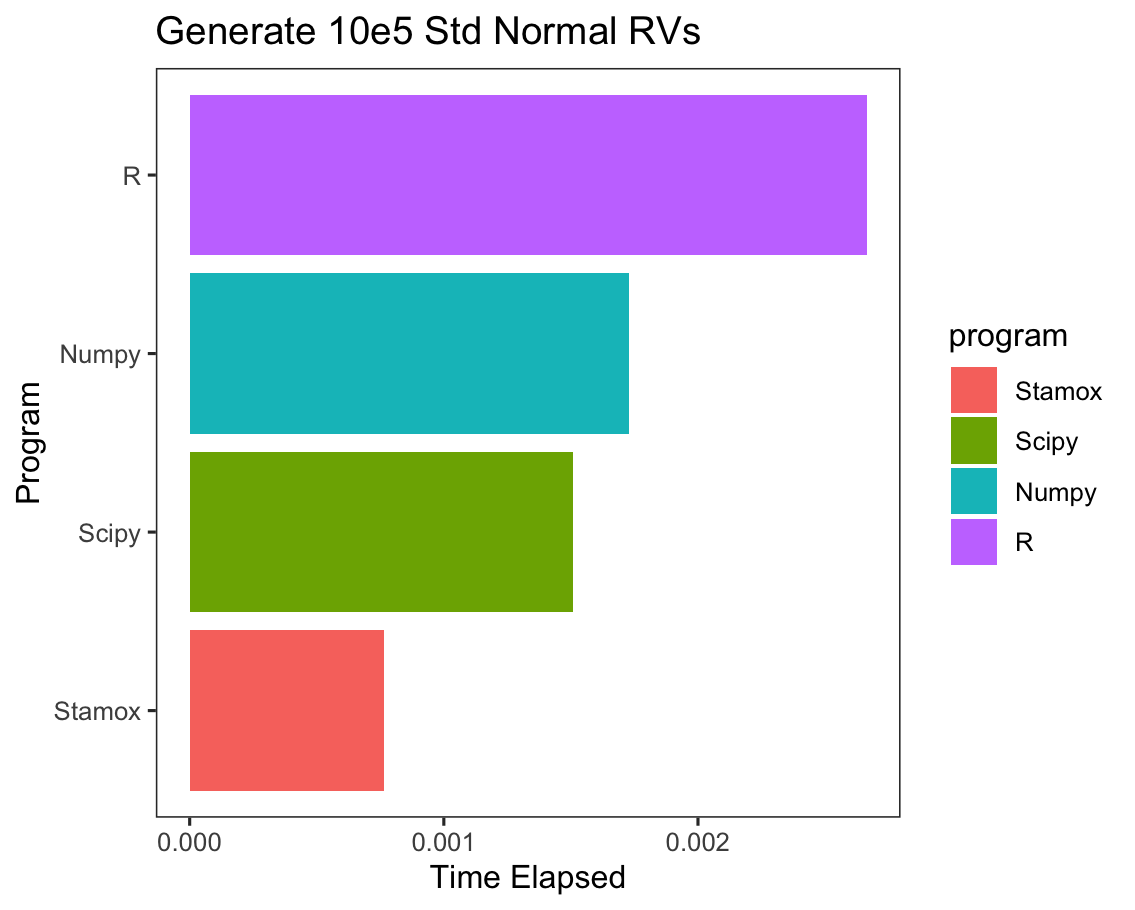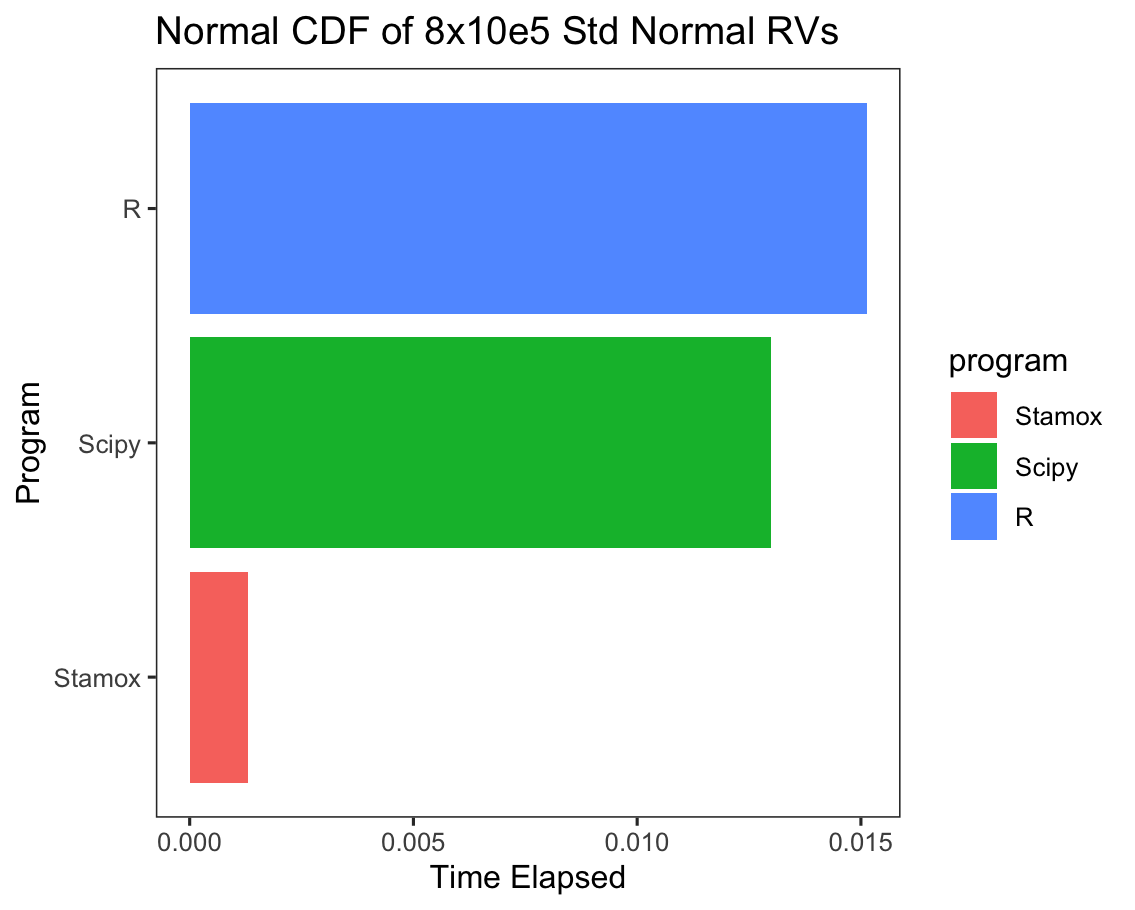Stamox
Hello Stamox, Why Another Wheel?
Why Another Wheel?
What stamox does is really simple, just make it possible, it aims to provide a statistic interface for JAX. But nowadays, we have so many statistic packages around the world varying from languages, for python, statsmodels just works great, for R, tidyverse derived packages are so delicate and easy to use. So why build another wheel?
Three reasons I think:
-
Personal interest, as a student of statistics, I want to learn more about statistics and machine learning, proficient knowledge comes from books but more from practice, write down the code behind the theory is a good way to learn.
-
Speed,
JAXis really fast, andEquinoxis a good tool to makeJAXmore convenient, backend ofJAXisXLA, which makes it possible to compile the code to GPU or TPU, and it is really fast. -
Easy of Use,
%>%is delicate operation inR, it combines the functions to a pipe and make the code more readable, andstamoxis inspired by it, and I want to take a try to make it convenient in python with>>.
And here're few benchmarks:
generate random variables
calculate cdf
Installation
pip install -U stamox
# or
pip install git+https://github.com/JiaYaobo/stamox.gitDocumentation
More comprehensive introduction and examples can be found in the documentation.
Quick Start
Similar but faster distribution functions to R
You can simply import all functions from stamox.functions
from stamox.functions import dnorm, pnorm, qnorm, rnorm
import jax.random as jrandom
key = jrandom.PRNGKey(20010813)
# random
x = rnorm(key, sample_shape=(1000, ))
# cdf
prob = pnorm(x)
# ppf
qntl = qnorm(prob)
# pdf
dense = dnorm(x)Fearless Pipeable
>> is the pipe operator, which is the similar to |> in F# and Elixir or %>% in R.
- You can simply import all pipeable functions from
pipe_functions
import jax.random as jrandom
import stamox.pipe_functions as PF
from stamox import pipe_jit
key = jrandom.PRNGKey(20010813)
@pipe_jit
def f(x):
return [3 * x[:, 0] + 2 * x[:, 1] - x[:, 2], x] # [y, X]
pipe = PF.rnorm(sample_shape=(1000, 3)) >> f >> PF.lm
state = pipe(key)
print(state.params)- Custom Functions Pipeable
from stamox import make_pipe, make_partial_pipe, Pipeable
import jax.numpy as jnp
import jax.random as jrandom
x = jnp.ones((1000, ))
# single input, simply add make pipe
@make_pipe
def f(x):
return x ** 2
# multiple input, decorate with make partial pipe
@make_partial_pipe
def g(x, y):
return x + y
# x -> f -> g(y=2.) -> f -> g(y=3.) -> f
h = Pipeable(x) >> f >> g(y=2.) >> f >> g(y=3.) >> f
# h is a Pipeable object, you can call it to get the result
print(h())- Compatible With
JAXandEquinox
You can use autograd features from JAX and Equinox with Stamox easily.
import jax.numpy as jnp
from stamox import make_partial_pipe
from equinox import filter_jit, filter_vmap, filter_grad
@make_partial_pipe
@filter_jit
@filter_vmap
@filter_grad
def f(x, y):
return y * x ** 3
# df/dx = 3y * x^2
g = f(y=3.) # derive with respect to x given y=3
g(jnp.array([1., 2., 3.]))Or vmap, pmap, jit features integrated with Stamox:
from stamox import pipe_vmap, pipe_jit
@pipe_vmap
@pipe_jit
def f(x):
return x ** 2
g = f >> f >> f
print(g(jnp.array([1, 2, 3])))Linear Regression with Formula
import pandas as pd
import numpy as np
from stamox.functions import lm # or from stamox.pipe_functions import lm
x = np.random.uniform(size=(1000, 3))
y = 2 * x[:,0] + 3 * x[:,1] + 4 * x[:,2] + np.random.normal(size=1000)
df = pd.DataFrame(x, columns=['x1', 'x2', 'x3'])
df['y'] = y
lm(df, 'y~x1+x2+x3').paramsAcceleration Support
JAX can be accelerated by GPU and TPU. So, Stamox is compatible with them.
Contributing
Contributions are welcome, and they are greatly appreciated! Every little bit helps, and credit will always be given.
- Fork the
stamoxrepository by clicking the Fork button on the repository page. This creates a copy of thestamoxrepository in your own account. - Install Python >= 3.8 locally in order to run tests.
- pip installing your fork from source. This allows you to modify the code and immediately test it out:
git clone https://github.com/JiaYaobo/stamox.git
cd stamox- Add the
stamoxrepo as an upstream remote, so you can use it to sync your changes.
git remote add upstream https://github.com/JiaYaobo/stamox.git- Create a branch for local development:
git checkout -b name-of-your-bugfix-or-feature- Install requirements for tests
pip install -r tests/requirements.txt- Make sure the tests pass by running the following command from the top of the repository:
pytest tests/- Commit your changes and push your branch to GitHub:
git add .
git commit -m "Your detailed description of your changes."Then sync your code with the main repo:
git fetch upstream
git rebase upstream/mainFinally, push your changes to your fork:
git push --set-upstream origin name-of-your-bugfix-or-feature- Submit a pull request through the GitHub website.




